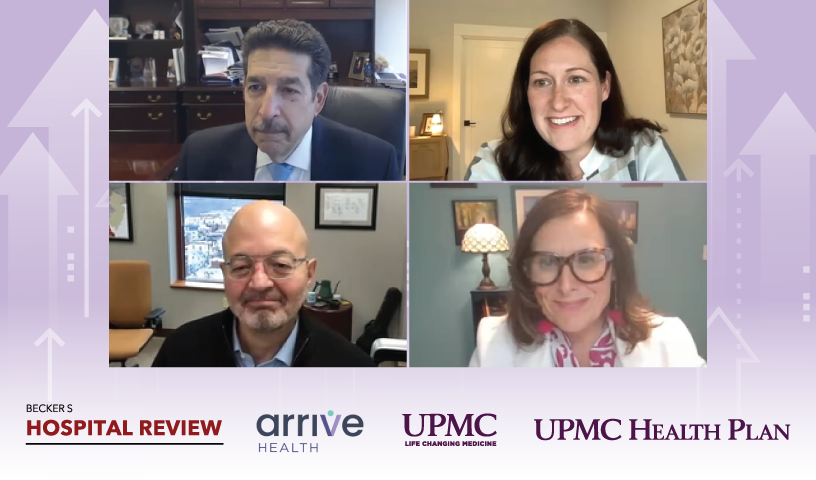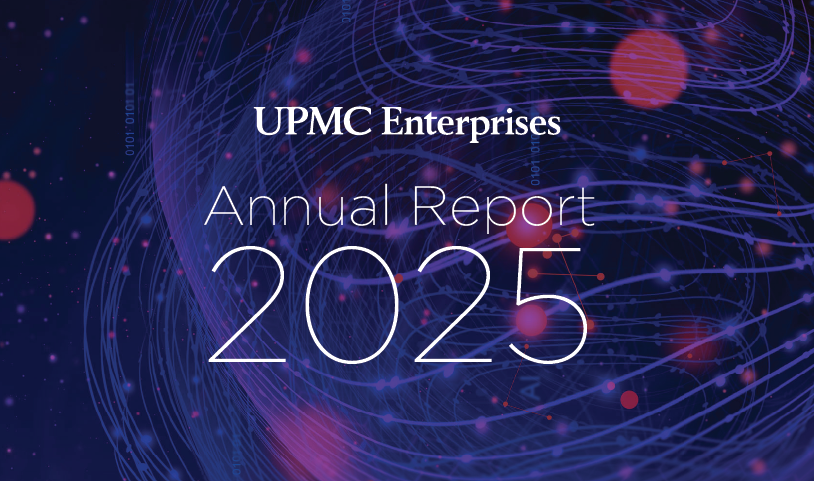
Feb 14, 2025
Webinar Discussion Identifies ‘Win-Win-Win’ Opportunity from Improving Prior Authorization
For health care providers, pharmacists, and patients, the prior authorization (PA) process can be a significant drain on time, financial resources, and overall efficiency. A necessary step in the medication distribution process, prior authorization requires health plans to approve prescribed treatments and services to ensure coverage and patient safety.
While PA is essential for maintaining safe and cost-effective care, the extra diligence has become an administrative burden for providers and payers. It also creates confusion and complexity for patients, which can result in medication noncompliance and increased rates of readmission.
A recent whitepaper produced by Arrive Health, a UPMC Enterprises portfolio company and UPMC-supported technology, identified four key areas for improvement in the PA process:
- PAs fuel burnout, stress levels, and labor shortages.
- Increased costs for health care systems and plans.
- PAs are contributing to non-adherence and poor patient outcomes.
- Increased government scrutiny.
With providers and patients feeling the same pressure across the U.S., how are experts handling these hurdles to make the process simpler? A webinar on Feb. 11 hosted by Becker’s Healthcare and Arrive Health explored the opportunities to improve PA that lie in digital technologies.
In “From Obstacles to Opportunities: Advancements in Prior Authorization Technology,” a panel of leading experts from UPMC, led by Christie Callahan, Chief Operating Officer at Arrive Health, discussed how cutting-edge technologies are set to transform the PA process. There is great potential in combining real-time prescription benefit (RTPB) tools with electronic prior authorization (ePA) to streamline workflows, as well as increasing automation to reduce administrative burdens.
The webinar provided a unique perspective on PA, drawing from the insights of experts coming from clinical, pharmacy, and health plan backgrounds — Rob Bart, MD, Chief Medical Information Officer at UPMC, Rebecca Taylor, PharmD, Vice President of Pharmacy at UPMC, and Chronis Manolis, Senior Vice President of Pharmacy at UPMC Health Plan.
The group agreed that patients are most motivated to fill prescriptions and take next steps to ensure their health following an appointment with their doctor. However, if PA takes too long, the process is stopped, and patients are more likely to not fill or complete taking their medications. This loss of engagement can lead to complications and readmissions. Technology that better informs patients while reducing administrative burdens is a major opportunity.
From the physician perspective, Dr. Bart explained that patients need a simpler process from their conversations with their doctor to properly taking their medications. Helping speed up the process of PAs will allow patients to pick up medications and begin taking them quickly, “closing the loop” on patients who may not understand the importance of the medication or who may no longer have the time or motivation to continue keeping up on their care when they leave the doctor’s office.
Manolis and Dr. Taylor agreed on the challenges bogging down approvals from all sides, that are increasingly difficult due to a lack of adoption of technology.
“Information should be portable, accessible, and easy to understand,” Dr. Taylor said.
Manolis explained the unique opportunity that comes with improving the prior authorization process — a “win-win-win” for patients, providers, and health plans. The more informed patients are, the faster the solutions arise, and the less money is wasted throughout the process, including costs for readmissions and additional medications for patients and health plans.
“Prior authorization is not going away, however that doesn’t mean we can’t improve the process,” he stated. “We have an opportunity to finally align the stakeholders to move this over the goal line.”
The three panelists agreed that artificial intelligence has a great opportunity to improve the tedious aspects of PA but should be kept in check for the aspects that require health plan or clinical decision-making. Processes such as summarizing doctors’ notes, digital chart documentation, or creating more accessible medical explanations for patients were suggested tasks for AI; decisions on patient welfare and individual needs should be left to human discretion.
“Much like providers, pharmacists don’t go into pharmacy to be on the phone and moving the paperwork around. My hope is that removing repetitive, low-value tasks for all of our professionals makes more people want to move into these professions,” Dr. Taylor said. “Does this make people enjoy their jobs more, does it help them connect with patients more, and does the patient see and feel that experience? That’s one of my hopes.”
Next Steps
- Register to watch the webinar on-demand here: From Obstacles to Opportunities: Advancements in Prior Authorization Technology.
- Learn more about Arrive Health.
- Download a report, Ambulatory Pharmacies at Health Systems: Technologies and Strategies to Boost Consumer Engagement, from the Center for Connected Medicine.


